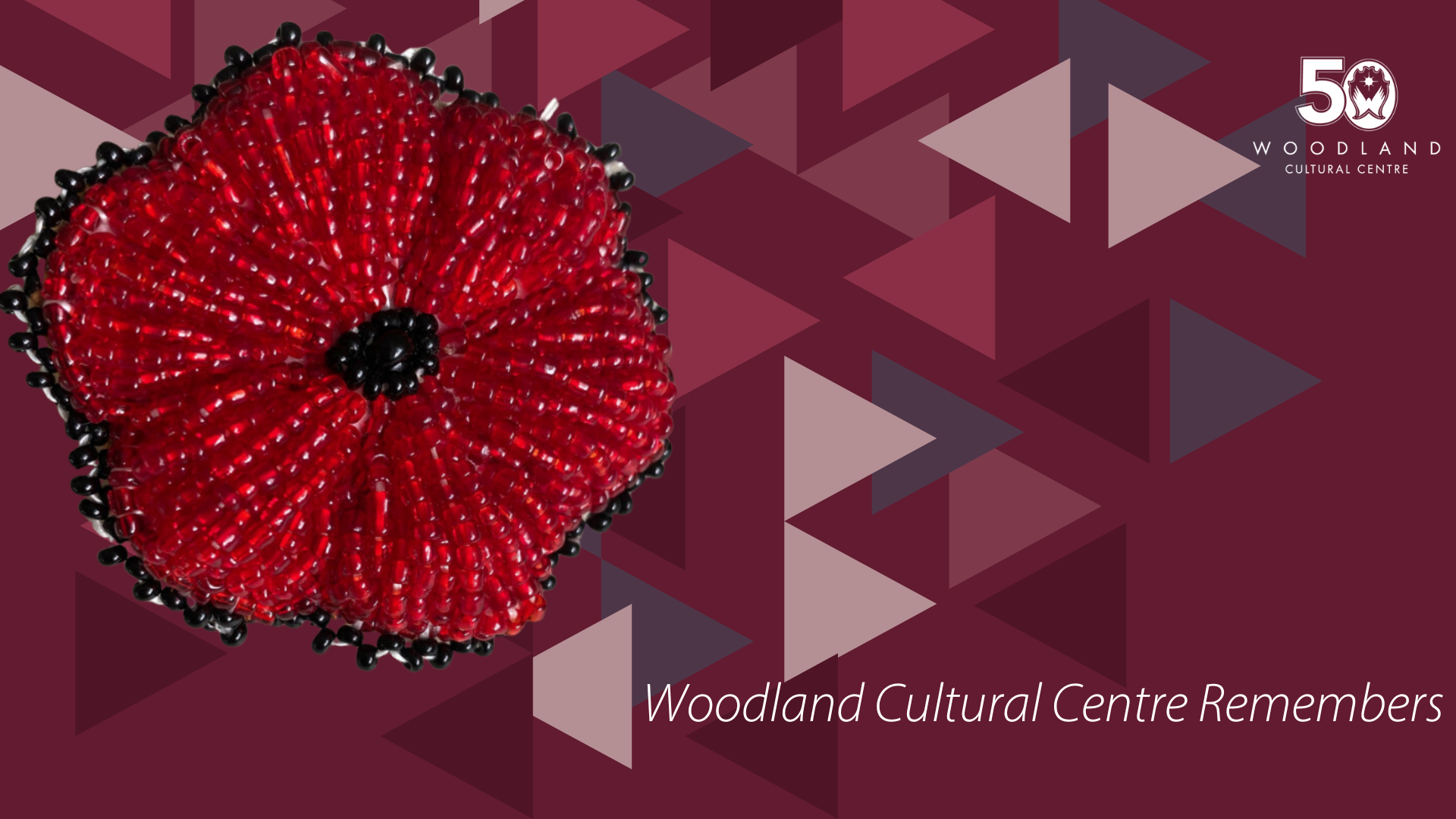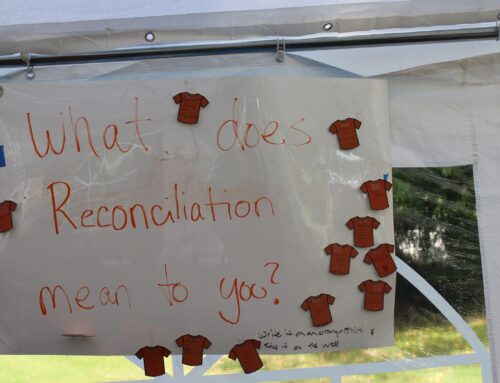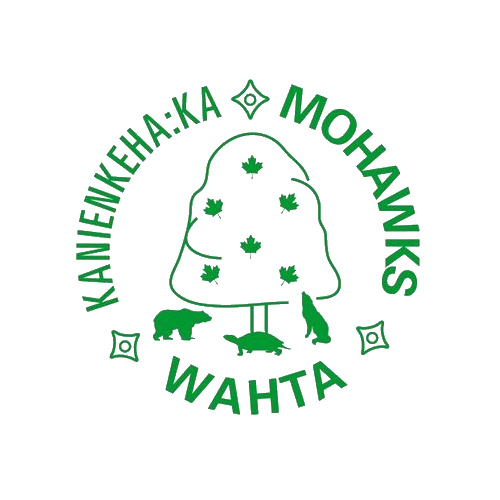We, the people of Tyendinaga, Wahta, and Six Nations of the Grand River, are the descendants of warriors. Warriors were honoured and valued members of our society; instrumental in maintaining the Great Peace and protecting the Confederacy. In keeping with the traditions of our ancestors, the Woodland Cultural Centre offers the stories of a few of our communities’ warriors. We honour all Hodinohsho:ni warriors – names known and unknown – everyday but especially November 11th.
Thomas Laforce
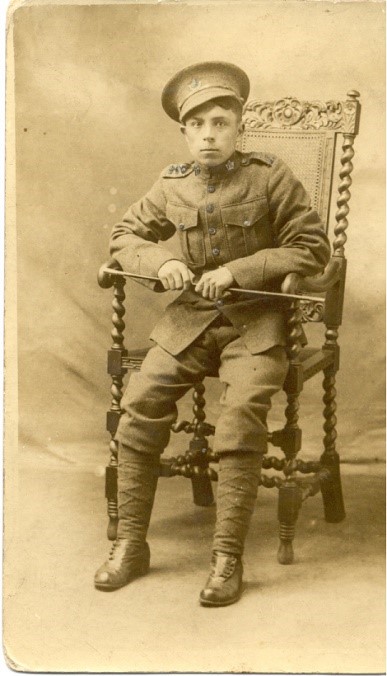
Thomas Laforce
Born August 23, 1898, Thomas Laforce was not yet eighteen when he enlisted with the 122nd Battalion out of Muskoka in February 1916. Naming his home address as the Sahanatien Reserve (now Wahta Mohawks), Thomas was the sole support for his widowed mother, Annie Powless, who lived near the Six Nations of the Grand River territory. Thomas left Halifax for overseas in May 1917, making him of age to serve.
Arriving in Liverpool, England, Thomas and the 122nd Battalion were absorbed into the 44th company of Canadian Forestry Corps and mobilized to serve at the front in France. Forestry companies were primarily responsible for making tunnel supports, railway lumber, and axe handles but might also be set to clearing and preparing spaces for airfields. Not actively engaging in combat, the forestry corps provided essential services for combat troops and military success.
Interestingly, Laforce was sentenced to 21 days field punishment (no.1) for “abusive language” to a superior in December 1917. This meant he could:
- Be kept in irons.
- Be attached by straps, irons or ropes for not more than two hours in one day to a fixed object. Must not be attached for more than three out of four consecutive days or for more than 21 days in all.
- Be made to labour as if he were undergoing imprisonment with hard labour.
Thomas and his battalion were demobilized in early 1919. His medical check at the end of his service showed him to be in fine physical health – indeed, he had perfect teeth with no dental work needed or ever done, 20/20 vision, a trim 115 pounds at 5’3″, and only a vaccination scar to his left arm to show for his wartime service. Thomas settled near his widowed mother in Wilsonville, near Six Nations of the Grand River territory. He was a veteran of the Great War at just 20 years old.
Adam Sandy

Adam Sandy
From Six Nations of the Grand River, Adam Sandy was a long standing member of the 37th Haldimand Rifles militia by the time he enlisted for service in the Canadian Expeditionary Forces. In April of 1916, Adam was 44 years old, married with three children. He had 18 years of militia experience and performed in the militia band. He enlisted with the 114th Battalion that April and placed his “X” on the attestation papers, naming his wife, Maggie Sandy, his next of kin and beneficiary.
The 114th Battalion made their way to Halifax by train in order to set sail for England and overseas service. Adam Sandy was with them at the onset of this journey but while waiting for the ship at Halifax he fell ill (perhaps with inflamed tonsils) and was hospitalized. The 114th left Halifax without him and for some inexplicable reason the army bureaucracy lost track of Sandy’s whereabouts, listing him as a deserter. By the time he had recovered and reported in with the army, his battalion had departed and Adam was transferred to #6 District Special Services Company in Halifax. His new posting had him guarding the munitions.
On December 6, 1917, Adam Sandy was in Halifax – likely in his barracks in Halifax Harbour. That morning in Halifax harbour a Norwegian ship collided with a French ship laden with explosives bound for the front in France. The Halifax Explosion killed 1782 people – Adam Sandy was one of these people. Initially reported as missing believed killed, by December 17th he was presumed dead.
As he was not in active combat during his war service, Adam’s widow and children were not granted military payment upon his death. His service medals were not awarded to them until 1926; and his name was added to the Halifax Explosion Memorial nearly two decades after it was dedicated (along with five other First Nations casualties).
His body was never identified. His resting spot, if he has one, is unmarked.
John Culbertson
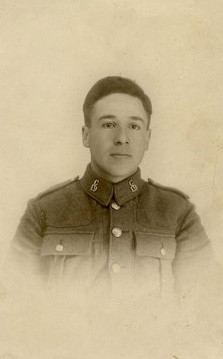
John Culbertson
John Alexander Culbertson, a Mohawk of the Bay of Quinte, enlisted in Belleville, Ontario in May of 1915 with the 39th Battalion. Arriving in England in July of that same year, Culbertson and the 39th awaited their orders at West Sandling Camp where much of the Canadian Expeditionary Forces were first stationed. While at West Sandling John had his 24th birthday on August 21st.
Waiting for months for orders, John was sentenced to 14 days of field punishment and fined $2.00 for an infraction before being transferred to the 19th Battalion and shipped to France in January of 1916. With the 19th, John’s battalion fought in well known battles such as Vimy Ridge, Hill 70, Passchendaele, and the First and Second Battle of the Somme.
September 1916 saw the 19th Battalion engaged in the Battle of Flers–Courcelette during the larger Battle of the Somme. Culbertson suffered a gunshot wound and shrapnel injuries to his right side as he fought in Martinpuich, adjacent to Courcelette. His wounds turned septic so he was sent to England for hospital treatment. Culbertson returned to his Battalion in April of 1917, however, within months, John once again needed medical treatment. This time for Pyrexia of Unknown Origin (P.O.U.) and impetigo, more commonly known as trench fever. John spent the end of 1917 in and out of field hospitals with trench fever, improving enough to be released only to regress within days and be readmitted to a new field hospital as the Battalion moved across France. Adding to his misery, Culbertson was also concussed when a piece of lumber fell on his head during this time.
John made it through the war, being discharged in May 1919 with a clean bill of health, a few additional scars, but no permanent disability according to his final medical exam.
Interested in More …
For those interested, the Woodland Cultural Centre mounted a World War One commemorative exhibition entitled “Veterans, Warriors, & Peacekeepers” in 2014. The presentation of 114th Battalion reproduction flags to the descendants of the enlisted members from our three support communities is viewable on YouTube.

